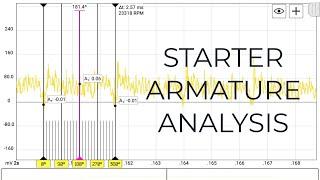Комментарии:

Really thoroughly explains Signals with clear, relevant examples. Nicely done, thank you!
Ответить
Thanks!
Ответить
Thank you for your great efforts and for sharing your knowledge, you're simply amazing
Ответить
Accidentally landed in this video. Now he's my favourite instructor. Amazing Rainer😍
Ответить
Great video!
It'll take a while for me to really understand some concepts, especially since we haven't been using Signals yet, and we've only just upgraded to v17. However, I'm excited about the future of both Signals and RxJS. :)

Great video! Thank you for sharing your knowledge ;)
Ответить
Awesome! Big thanks!
Ответить
Super!)) I`m understanding how it works. Thank you!)
Ответить
Thank you very much for sharing your knowledge.
Great content.

Yesterday, I pulled the init branch and started the tutorial, and everything was OK. Today, when I launched the application with ng serve, the server started successfully, but when I go to localhost:4200, I only see the header and the page content is blank. After 5 seconds, I get a timeout. It's as if the frontend is trying to connect to a remote server without getting a response. I can send you a screenshot if you want.
Ответить
If we update signal in an effect not aware of it could go into infinite loop. Will angular gives any warning? I think while implementing complex functionality developer may get into updating multiple effects that can lead to infinite loop, it is better angular should warn.
Ответить
hello i have start your tuto yesterday, but when i run your git repo, i have;---/**--- We are sorry. An error happened.
Ответить
Can you share your vscode extensions?
Ответить
Great Job. Thank you for all the videos and articles you share with the community, it helps a lot.
Ответить
Do you have written this guide somewhere? Like in medium or some other place? Because audio on this is not so great and putting me off.
Ответить
Sweet mama, fantastic stuff. Most in-depth guide in this topic that i found on yt. Thanks for this and keep up with great work! And subscribed ;)
Ответить
thanks, that was a wonderfull overview
Ответить
Thank you for the bombshell video Rainer!
While these Signal APIs vastly simplify how components/directives React to Changes, I feel that we still have not arrived at a good pattern for the Initialization phase of components/directives using Signal APIs.
Scheduling Initialization in constructor using the afterNextRender() seems to be the most sensible approach for me, with the added benefit of being SSR-friendly
I also tried setting up Initialization using effect() and untracked() but in the end it felt a bit "unsafe" because effect execution is asynchronously dependent on Change Detection Scheduling, which we have very little control over. I am also concerned about when the executed effect is itself an asynchronous fetch, like in your demo (the async search function).
ngOnInit, on the other hand does not have access to viewChild() and contentChild(), unless these queries are marked static.
Perhaps you can provide more insight regarding the advantages/disadvantages of the above approaches in future videos, when best practices emerge!

Best Angular tRainer ;)
Ответить
Great video, very clear explanation, thank you very well!
Ответить
Hi how do you feel about calling a private method in a computed signal that could hide a lot, i.e. what signal(s) the computed one depends on?
I kind of try to read the signals value first and pass them as function parameters for better readability...

Can you share your IDE setup & extensions
Ответить
Source: Window.addEventListener:message seems to be triggering change detection all the time
Ответить
Your example on toSignal() appears a simple solution, but in my experience, sometimes it is not appropriate to provide an arbitrary initial value, in which case signals don't work. I think this is an anti pattern. To me it seems more logical an architecture to wait for the real value from the database, rather than scattering around arbitrary starter values, which may have unexpected consequences (e.g. in effects that do calculations).
Ответить
I would like to congratulate you for the excellent work you did in this video, great explanations
Ответить
What I found here just Gold, You can't ask better explanation this, thanks for great work you've done here.
Ответить
very very good
Ответить
Effects don't see all value updates because the JavaScript event loop is single threaded and the effects are only executed after the current execution context has finished and the deferred event loop is drained. I'm pretty sure the only way that computed signals and effects automatically register their dependencies is that they record what signals are called during their execution; and more importantly this is only possible because JavaScript is single-threaded. I assume that there is a global register that is used to accumulate a list of called signals during the execution of an effect or computed and that is used to register the dependencies and listen for updates. This only works if only one effect or computed is able to be executed at a time.
Ответить
Any other devs having knockout.js flashbacks?
Ответить
Excellent video. Many thanks. Been using react for sevral years, with mobx for state management. Signals seem very close to how mobx works. What is your thought on using signals for application state as well?
Ответить
Very nice video, I learned a lot from it that was very fuzzy before.
Ответить
Thank you for this course! Finally i could understand how to use Signals!
Ответить
Absolutely amazing!
Ответить
HI , ExpressionChangedAfterItHasBeenCheckedError occurring due to the loading service but why it is coming from there ?
Ответить
Excellent video, but use dark theme please!
Ответить
very good stuff, thanks for your precious time.
just wondering the vs extension showing those properties definitions

Thanks for this. Also, your audio is much better in this video than some of your older ones.
Ответить
Great video! I am really looking forward to working with v17+.
I am personally a big fan of React, and I am happy to see Angular going towards something that feels more familiar to me.
It would be cool if the effects worked like React. You give it a list of which signals can cause it to trigger. The automatic triggering based on signals being referenced is cool, but also very dangerous as you mention. And having to wrap that in untrack just seems less elegant than an array of signals which can cause an update. Sad that they didn't want the explicit list of signals.

thanks effect is exactly what I needed.
Ответить
I am so greatful! I will share this with my team, so we can easily bring everybody to the same understanding of Signals pretty quickly! Thank you!
Ответить
Fantastic, Rainer! A comprehensive overview of the signals API and beyond...
Ответить
Fantastic content, brilliantly explained. I really appreciate the step by step changes and taking the time to explain why each error occurs. Master at work! Thank you for making and sharing this Rainer!
Ответить
does anybody know which extension is using to show the variable types while typing? Thanks in advance!
Ответить
Absolutely awesome Rainer. A complete overview of signals API and more ...
Ответить
Do we still need to explicitly set changeDetection to ChangeDetection.OnPush?
Ответить
whats the editor u are using for coding, how the type of variable are shown
Ответить
Really great video. Thanks for posting a detailed video. Any guide on What is the reactive context? Every view is considered as reactive context ?
Ответить
Good explanation. Can i ask what ide your using with the tooling inserting the greyed types etc.
Ответить






![[HOT] Gong Myeong & DOYOUNG's breakfast., 전지적 참견 시점 210911 [HOT] Gong Myeong & DOYOUNG's breakfast., 전지적 참견 시점 210911](https://invideo.cc/img/upload/Z0dtTHJSUmRBRFU.jpg)
![Magic Spider woman [I AM BEN] #beneagle #kungfu #martialarts #action #comedy #funny #viral Magic Spider woman [I AM BEN] #beneagle #kungfu #martialarts #action #comedy #funny #viral](https://invideo.cc/img/upload/OGFjNmVZZ25UN0s.jpg)


















